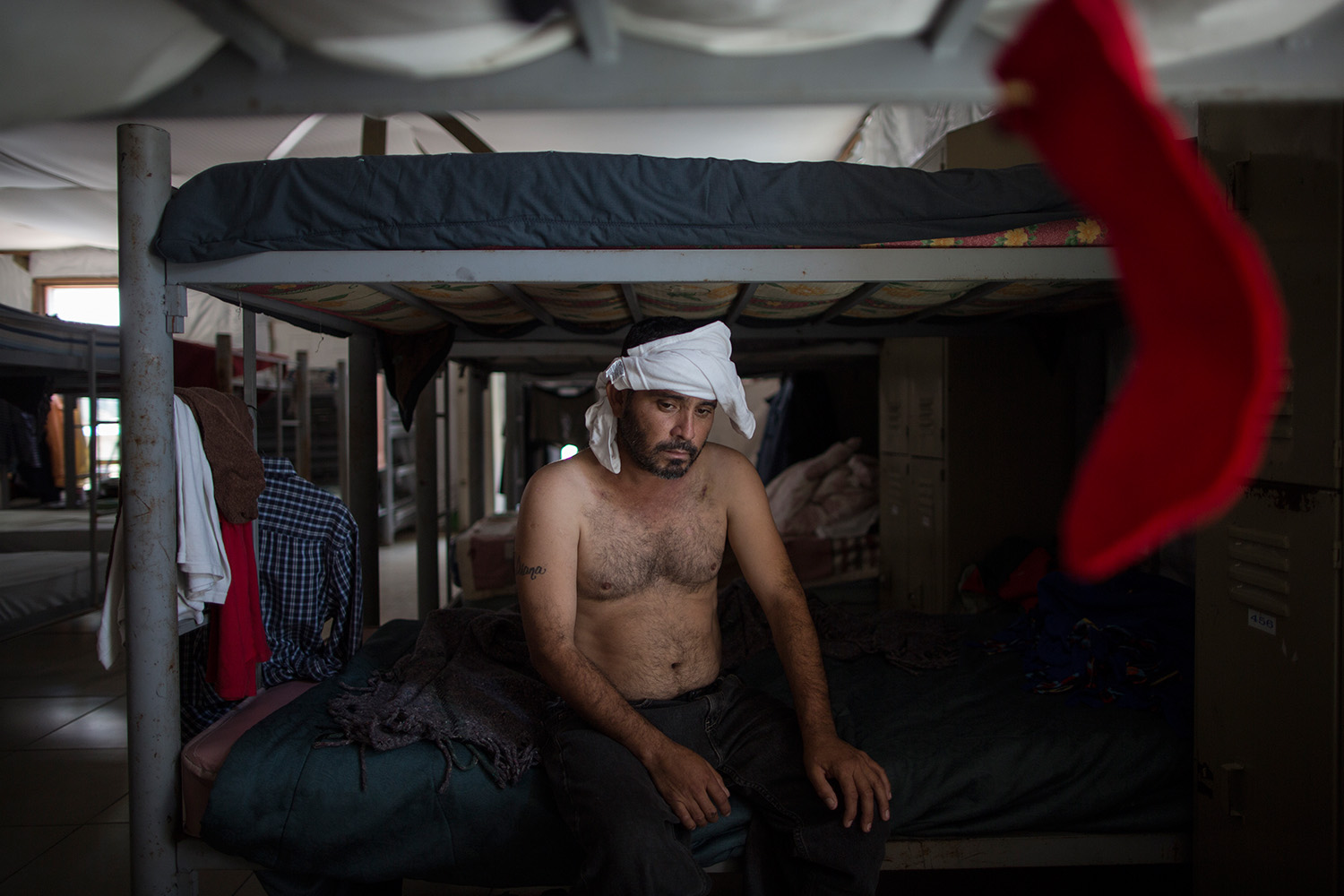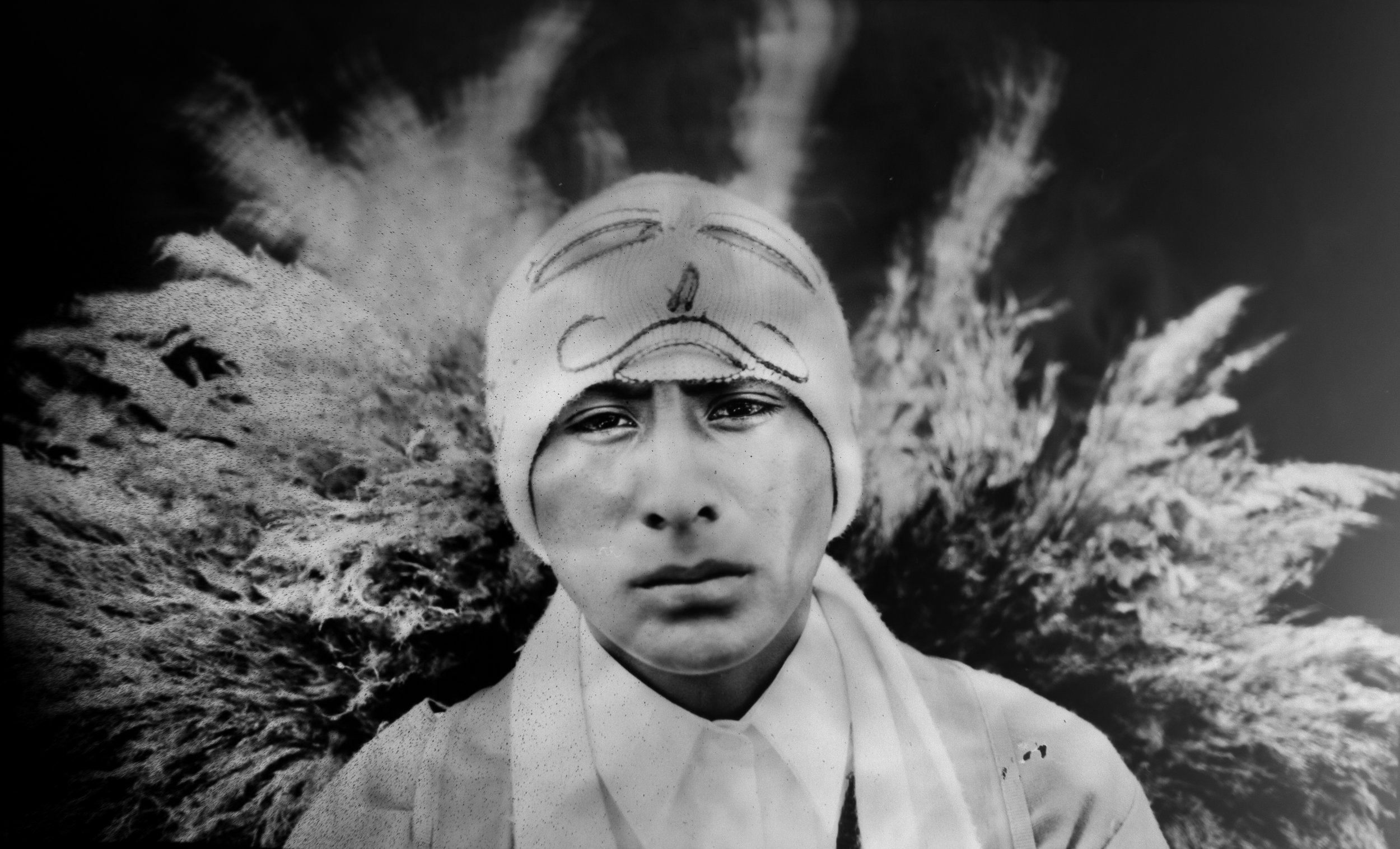AP Photographer Rodrigo Abd receives Cabot Prize

Columbia University's Graduate School of Journalism honored five veteran journalists for distinguished coverage of Latin America and the Caribbean on Tuesday.
Rodrigo Abd, an Associated Press photographer who has spent years documenting social problems in Latin America, was one of four who received the Maria Moors Cabot Prizes, considered the oldest in international journalism.
The other winners were Rosental C. Alves of the Knight Center for Journalism in the Americas; Margarita Martinez, a Colombian filmmaker; and Oscar Martinez of the digital newspaper El Faro in El Salvador.
A special citation was awarded to Marina Walker Guevara of the Panama Papers reporting team at the International Consortium of Investigative Journalists.
Abd said starting out he wanted to be a journalist finding his own stories rather than someone just waiting for a photo assignment. The 39-year-old Argentine said that when he documented the lives of gang members in Guatemala the world was focused on the U.S. invasion of Iraq. And when he immersed himself in the crisis in Honduras following the ousting of its president in 2009, much of the world's attention was on the global economic crisis.
In this Aug. 8, 2011 photo, Associated Press photographer Rodrigo Abd uses a 19th-century style wooden box camera as he photographs a participant of the Rabin Ajau National Folkloric Festival in Guatemala City. Participants had to hold still for up to two minutes as Abd made exposures with light shining directly from the lens onto photo paper inside the box camera. (AP Photo/Jesus Cuque Lopez)
"But here is the main point: we care, we love this continent (Latin America) and we want to tell stories in depth in our home countries," Abd said.
Abd, who also has worked in Haiti, Cuba, Colombia, Venezuela, Brazil and other parts of the world, was on the AP team that won a Pulitzer Prize in 2013 for photographic coverage of the civil war in Syria.
The winners were announced in July. Judges noted Abd's ability to illuminate social issues in spite of great risks and experiment with technique.
The prize was established in 1938 to recognize distinguished journalism in Latin America and the Caribbean. Winners receive a gold medal and $5,000.
It is the third consecutive year an Associated Press journalist has been honored with the prize.
This Nov. 11, 2014 photo shows a deforested area dotted with blue tarps, marking the area where miners reside, and craters filled with water, caused by illegal gold mining activities, in La Pampa, in Peru's Madre de Dios region. Peru's government declared an emergency across a broad jungle region because of mercury contamination, much of it caused by wildcat gold mining. (AP Photo/Rodrigo Abd)
This June 16, 2013 photo shows Eudicia Urbano, 70, in front of her former home near the spot where her husband Marcial Escalante died, weeping as she retells how he was tortured and killed by Shining Path rebels, in Chaca, Peru. The region endured some of the worst atrocities of Peru's 1980-2000 conflict, in which both Maoist-inspired insurgents and security forces committed grave human rights violations. (AP Photo/Rodrigo Abd)
In this Jan. 4, 2016 photo, rebel fighters for the 36th Front of the Revolutionary Armed Forces of Colombia, or FARC, bathe in a creek near their hidden camp in Antioquia state, in the northwest Andes of Colombia. The rebel fighters share all facilities on equal terms. Many of them are couples and share sleeping quarters. (AP Photo/Rodrigo Abd)
In this Sept. 10, 2008 photo, rural midwife Francisca Raquec holds Sara Raquec's newborn son in El Llano, Guatemala. In Guatemala, rural midwives deliver six of every ten babies, and the government plans to train 15,000 of them to reduce the number of women who die from child birth. (AP Photo/Rodrigo Abd)
In this Nov. 27, 2012 photo, Humberto Cova Mendoza, who works skinning fish, poses for a portrait at the port of El Callao, Peru. Many believe the modernization of the port may have a negative impact on their livelihood, but fishermen also are concerned that overfishing has depleted the waters of scorpion fish, horse mackerel and mullet. Fishermen once arrived at El Callao's docks and sold as much as 110 pounds of fish. Nowadays, no more than 15 pounds are offered. (AP Photo/Rodrigo Abd)
In this Dec. 7, 2012 photo, Marvin Vega unloads a crate of anchovies from the holding area of a "boliche," the Peruvian term for boats that are used by fishermen who fish with nets, at the port of El Callao, Peru. Development of the Peru's largest and oldest port undertaken by a global shipping industry giant based in the Netherlands, will expand port operations over the next couple of years, but many fishermen fear the modernization of the port may have a negative impact on their livelihood. (AP Photo/Rodrigo Abd)
In this April 28, 2014 photo, a woman throws a rock and a bag at riot policemen who block her way home in Huepetuhe district in Peru's Madre de Dios region in Peru. Authorities began enforcing a ban on illegal mining in the Huepetuhe district, and before the deadline, miners clashed with police while intermittently blocking traffic on the Interoceanic Highway that links the Pacific with Brazil. (AP Photo/Rodrigo Abd)
In this Nov. 25, 2007 photo, drug dealer Joan, who identifies himself as "El Patan," shows his guns and a scar on his stomach from an injury suffered during clashes with rival gangs in Las Mayas neighborhood in Caracas, Venezuela. (AP Photo/Rodrigo Abd)
In this Nov. 13, 2013 photo, the scattered remains of five skeletons are unearthed during an exhumation of a mass grave in the district of Chungui, Peru. This isolated corner of Peru is witnessing the biggest exhumation to date of victims of the nation's 1980-2000 internal conflict, which claimed an estimated 70,000 lives. (AP Photo/Rodrigo Abd)
In this Sept. 2, 2008 photo, rural midwife Francisca Raquec, 65, second from left, returns home after shopping at the market in Patzun, Guatemala. In Guatemala, rural midwives deliver six of every ten babies, and the government plans to train 15,000 of them to reduce the number of women who die from child birth. (AP Photo/Rodrigo Abd)
In this combo of eight photos taken July 29, 2011, Mayan Queens representing Guatemalan states pose for portraits taken with a 19th century style box camera during the Rabin Ajau National Folkloric Festival in Coban, Guatemala. (AP Photo/Rodrigo Abd)
In this Oct. 5, 2011 photo, a man who only gave his first name Wilmer carries a sack of metal he collected after working the entire day at the bottom of one of the biggest trash dumps in the city, known as "The Mine," in Guatemala City. This activity known locally as "mining" is extremely dangerous due to mud slides and collapses, but earns many of them about 150 quetzals ($20 dollars) a day, nearly twice the minimum daily wage. (AP Photo/Rodrigo Abd)
In this Oct. 19, 2011 photo, people search for scrap metal in contaminated water at the bottom of one of the biggest trash dumps in the city, known as "The Mine," in Guatemala City. (AP Photo/Rodrigo Abd)
In this May 16, 2014 photo, miners leave the site where they lived and worked after police destroyed their illegal mining operation in La Pampa in the Madre de Dios region of Peru, Friday, May 16, 2014. Madre de Dios state has an estimated 40,000 illegal miners, most of whom are poor migrants from the Andean highlands. (AP Photo/Rodrigo Abd)
Text from the AP news story, AP Photographer Rodrigo Abd receives Cabot Prize, by Claudia Torrens.
Photos by Rodrigo Abd
Follow AP photographers on Twitter
See these photos on APImages
Written content on this site is not created by the editorial department of AP, unless otherwise noted.
Visual artist and Journalist







